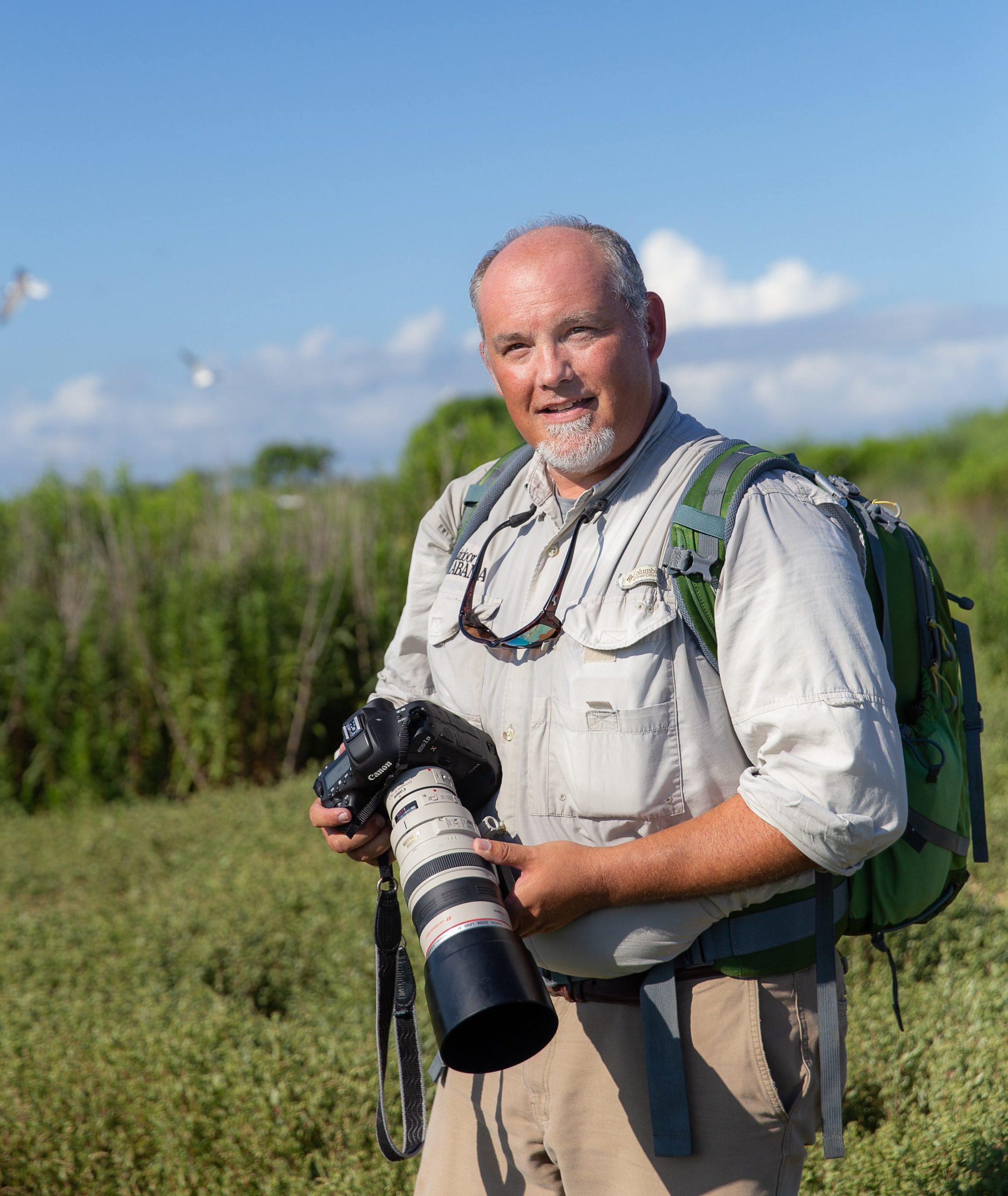 Billy Pope has been creating images for 25 years. He has photographed governors, generals, entertainers, natural disasters, and for international mission organizations. During the past 15 years, his role as art director and staff photographer for the Alabama Department of Conservation and Natural Resources has been a dream job that brings together his talents as an artist and his love for the outdoors. His work has been awarded regional and national awards. Some of his photos have been published in Alabama Living. Pope lives in Pike Road, Alabama, with his wife and two daughters. – Lenore Vickrey
Billy Pope has been creating images for 25 years. He has photographed governors, generals, entertainers, natural disasters, and for international mission organizations. During the past 15 years, his role as art director and staff photographer for the Alabama Department of Conservation and Natural Resources has been a dream job that brings together his talents as an artist and his love for the outdoors. His work has been awarded regional and national awards. Some of his photos have been published in Alabama Living. Pope lives in Pike Road, Alabama, with his wife and two daughters. – Lenore Vickrey
How did you become interested in photography?
I never really set out to be a photographer. I have always studied art and design and enjoyed creating images, be it with a brush, pencil or camera. My first job was as an illustrator for the Department of the Air Force. In that role, I was given the opportunity to fill in for our staff photographer on occasion. Those experiences really intrigued me—telling stories one frame at a time. Having to be aware of what was going on around me and anticipating the important moments pushed me to continue to hone a craft I never really knew I would love.
Were you trained professionally, or are you self-taught?
I was never trained professionally in photography. I studied graphic design which I feel translates into my photography. I guess I was self-taught. The biggest influences were editors and photographers sharing their knowledge and being honest with me, as well as giving me the opportunity to grow as a storyteller.
What is your favorite place in Alabama to shoot photos and why?
Alabama has a very diverse landscape and with this diversity the opportunities are endless for photography. I enjoy capturing the fall color in Little River Canyon, the spring bloom of the Cahaba Lilies on the Cahaba River, and there is something special about the sun setting on the bayou in Bayou la Batre. It’s not just the beauty of the locations, it’s the uniqueness of the people in the these “out of the way” places. The deep love the people I meet have for the natural history of our state is part of the fabric that makes up our culture. I have been blessed to be able to capture those places, people and stories and share them with everyone to enjoy.
What’s better – a 35mm DSLR or a smartphone camera?
I read somewhere, “The best camera is the one you have with you.” I find that to be very true. The world we live in is the most photographed in history. Smartphone camera technology has advanced to a point that, in some cases, it is hard to tell the difference in a smartphone photo versus a photo shot with a DSLR camera. They all have their role in today’s story. Cameras and lenses are like different brushes an artist uses on their canvas. Each camera or combination of camera and lens produces a desired result to convey a story. For wildlife and most nature photography I would say a DSLR would give you a better chance of achieving the desired result. Smartphones have produced some great scenic images; but, using a DSLR camera with the right lens, the same scene has more depth to the image. Ultimately, the goal is to capture an image that both pleases yourself and preserves the memory for future generations.
What’s one piece of advice for folks who want to shoot photos of nature and/or animals?
The one piece of advice I would give people who want to photograph wildlife and nature is, “You must be present to win!” Things in nature never happen the same way twice. No two sunsets or sunrises are the same. You can’t tell that Eastern Wild Turkey to go back and gobble again. Along with being present, you also need to learn your subject and its habits, much like a hunter who spends months learning the habits of that trophy buck. Where does the sun rise over the mountain? What’s the best bird seed to attract a certain species to my feeder? It’s a never-ending learning process that will provide you with a greater appreciation for wildlife and the outdoors.ν
Follow Billy at:
billypopephoto on Instagram




